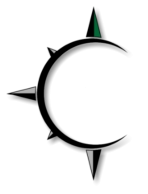Marla Bradley, Website & Graphic Designer.
Upper Peninsula of Michigan.
Veishea Grebin, Website & Graphic Designer.
Northern Wisconsin.
© 2024 North Country Website Design.
(906) 367-5404
Low Cost, High Quality Websites
Terminology of Modern Websites
WordPress
WordPress powers millions of websites worldwide. WordPress allows customers to update their website on their own without the help of a website developer. WordPress is a content management system (CMS) which allows you to add, remove or update content on your website without high level technical training. I find WordPress great for Blog websites. A WordPress theme makes WordPress look like a website. There are thousands of themes available — some free, some paid. Most WordPress themes require some customization to get them to match your company’s brand. But using a theme is WAY better than starting from scratch like we had to do in the olden days (early to mid 2000s). WordPress themes are one of the main reasons you can build a custom, high-quality website for a fraction of what websites used to cost. A WordPress plugin gives your site functionality. Plugins are like apps on your phone and there are tens of thousands of WordPress plug-ins to choose from. There are plug-ins for contact forms, image galleries, site security, online shopping carts — pretty much anything you can think of. WordPress can have many security issues. Because WordPress has sign-ons available to update the website, it can get hacked much easier than a site the has no sign-ons available. WordPress also has many different plug-ins available from many different companies. These plug-ins can potentially have security issues. For these reasons, and many others, you must take extra steps to secure and backup WordPress sites. For NCWD to properly secure and backup your WordPress site, we charge $9 a month. For more information on WordPress sites, click here.Hosting (aka Webhosting)
To have a website the internet, it needs to be hosted on a web server. Kind of like if you want to build a house, you need a piece of land to build your house on. Examples of website hosting providers are GoDaddy and BlueHost. NCWD uses IONOS. NCWD charges $13.00 per month for webhosting. For more information, click here.Domain Name (aka URL)
Amazon.com, CNN.com and NorthCountryWebsiteDesign.com are all examples of domain names. Behind the scenes, every website is identified by an IP address which is a long string of numbers like 143.398.884.342. But who can remember all those digits? Therefore, a domain name is linked to each IP address because it’s easier to use words instead of numbers to identify a website. There are many types of domain extensions, not just .com, .net, and .org. There are so many to choose from! Some of the popular ones are .biz, .online, .website, and .site. Some other fun ones are .fitness, .dance, .bar, and so much more! Each domain extension costs a different amount. Through NCWD .com domains cost $30 per year. A .bar domain costs $115 per year. The other domain extensions costs something in between. For more information, click here. “DOMAIN NAME 101: WHAT DO THE VARIOUS DOMAIN EXTENSIONS MEAN?“ ”Wikipedia’s “List of Internet top-level domains”Domain Registrar
Just like you get the license plate for your car from the Department of Motor Vehicles, you get your domain name from a domain registrar. There are numerous domain registrars online. We use IONOS.DNS
DNS is an acronym for domain name server. They’re the phone book of the internet. Humans use domain names to describe websites rather than using IP addresses. When you type a domain name into a web browser, your internet service provider accesses one of many domain name servers located around the world to quickly lookup the corresponding IP address associated with the domain name, then routes you to the website you requested.HTML
HTML is an acronym for hypertext markup language, and it’s the standard language for creating websites and web pages. It was invented by Tim Berners-Lee (known as the inventor of the world wide web) in 1991.CSS
CSS is an acronym for cascading style sheets. HTML is used to create web pages, CSS makes them look pretty. CSS also controls how a website looks on a desktop vs. a tablet vs. a phone.Mobile Responsive
If a website is mobile responsive, it uses CSS to respond to the size of the viewing screen so readers have a pleasant user experience on their mobile device. That means font sizes are bigger plus the page layout and navigation are transformed so they’re usable on a mobile device. If you have to pinch and zoom to make anything readable, that is by definition not mobile friendly.SSL
SSL stands for secure socket layer. An SSL certificate encrypts data sent from a web server to your browser so hackers can’t read it. If you see a little padlock in the address bar of your web browser, that means you’re visiting a secure website. A non- secure website has a URL that begins with “http” in the address bar, whereas a secure website begins with “https” — with the “s” standing for “secure”. http => hyper text transfer protocol https => hyper text transfer protocol secure NCWD charges $40 per year for an SSL certificate. For more information, click here.SEO
SEO stands for search engine optimization. SEO is a large and complex topic, but in a nutshell it’s about configuring your website to get free traffic from search engine results pages (SERPs). Based on my conversations with clients and prospective clients, there is massive confusion about what SEO is and how it works — not to mention wildly unrealistic expectations. In order to get ranked in the organic search engine listings, you need to produce content that: • Is super high quality. • People actually want. • People share or link to (linking to social media is a great help). • is mobile friendly. NCWD charges for the time it takes to put SEO on your website.Google Analytics
Google Analytics is a free service from Google that gives you statistics about your website — how many visitors your site is getting, which pages they’re viewing, how long they’re spending on each page, etc. To use Google Analytics, all you do is install a small tracking script on your website and you’re good to go. Google Analytics removes the guesswork by giving you data on what’s working on your website and what isn’t. NCWD charges for the time it takes to put Google Analytics on your website (usually about 10 minutes or so).Email Service Provider (ESP)
An email service provider (aka EMS: email management service) helps you build, manage and communicate with your list of email subscribers. A few examples of popular email service providers include MailChimp, Constant Contact, ConvertKit, GetResponse and ActiveCampaign. There are several reasons for using an email service provider: • Automation. Users are able to add or remove themselves from your list automatically. You can also send emails automatically based on a user’s actions. • Scalability. You can send a broadcast message to hundreds or thousands of your subscribers with the click of a mouse. It’s next to impossible to do this manually. • Deliverability. Most email service providers are white-listed so your emails don’t get flagged as spam. If you tried to send more than a few dozen emails in rapid fire succession using Outlook or Gmail, it would most likely trigger a spam filter with your ISP and your emails wouldn’t get sent. • Compliance. Stay compliant with the CAN-SPAM Act and avoid penalties. • Reporting & Tracking. Find out what percentage of people opened your email, how many people clicked on a link in your email, which email subject line performed the best, etc. NCWD charges nothing for basic emails with up to 2GB of storage (just the time it takes to set up each email). With each domain, you can have an unlimited amount of emails. If you want to upgrade your email, click here for more information.BASIC ANATOMY OF A WEBSITE
Header
This is the top part of a website containing the logo and usually (but not always) the site’s navigation menu. The header is the zone at the top of the page that stays constant and visible as visitors click around your site. Once upon a time the header was a place to display a banner or graphic promoting your brand — kind of like the cover photo on a Facebook page. But today’s websites are more streamlined and the trend is to just include your logo and navigation in the header.These are the links at the top of the page to help you find what you’re looking for. The navigation links are usually in the header or just below it. On complex sites with tons of pages, you’ll sometimes see a “mega menu” which is a drop-down menu triggered by hovering over a link in the main navigation. The drop-down mega menu then shows you many links organized into categories and sub-categories, kind of like a site-map.
Feature Image
This is the large image you see at the top of a web page that grabs your attention and sets the tone for the rest of the page. Feature images typically span the full width of the page and often contain headlines or calls to action.Slider
A slider is used to display pictures … like a slideshow … where the images slide from right to left or vice-versa. Sliders can appear anywhere on a website, but they’re commonly used on home pages in place of (or in addition to) a feature image. As websites evolve and more emphasis is placed on page load speed as well as optimizing user experiences on mobile devices, slider use is diminishing because they’re resource hogs and are often little more than eye-candy.Website Content
Website content is the information your visitors consume. Web copy or body copy refers to written text. Website content refers to all the elements used to communicate your message - text, images, video, audio, the whole shebang.Sidebar
A sidebar is the narrow vertical column right next to your website content. The sidebar often contains advertisements, links to other content, calls to action or a search box. Think of the sidebar as secondary to your primary website content. In the past few years, there’s been a trend in website design to eliminate the sidebar altogether and just go with a single, full-width column to display your content. For some sites, eliminating the sidebar makes sense, for others it does not. It really comes down to personal preference and/or which layout (sidebar vs. no sidebar) provides a better user experience or higher conversion rate.A footer performs the same function as the header — it’s a region on a website that’s constant from page to page — except a footer is at the bottom of a page instead of the top. You can put whatever you want in a footer. But what’s often in the footer is contact info, privacy policy, terms of use, sitemap, social media icons and links to other important pages on your site.
Landing Page
When you run ads on Google or Facebook (or anywhere) you have to provide a destination page for the person to land on when they click the ad — hence, the name landing page. Landing pages are a little different than other pages on a website in that any distractions, such as a header or footer or sidebar, are removed or minimized. The primary goal of a landing page is getting the visitor to take an action (i.e. download a report, sign up for an email list, make a purchase, etc) and maximize conversions. You want the content on a landing page to be as laser-focused as possible.Home Page (or Homepage)
Also known as the front page or main page. This is the starting point on most websites. A website design best practice is to link your logo to your home page, giving your visitors an “escape” or “reset” if they ever get lost on your site.Blog
A blog is actually a type of website. So what’s the difference between a blog and a website? Not much. It basically boils down to how the content is structured and presented. • When you publish something on a blog it’s called a post and blog posts are published in chronological order like journal entries in a diary. The origin of the word “blog” is a contraction of web log. • When you publish something on a website it’s called a page and web pages are not presented sequentially. They’re just a collection pages (i.e. homepage, about us page, contact page, etc) that are linked together. • Blog posts allow for interactivity with readers via comments. Standard web pages don’t have a commenting section. • Web pages are usually informational in nature about a company’s products or services. They tend to use a bit more formal and official sounding language. Blog posts have a more casual and conversational tone. • A blog can be a standalone website or it can be a section of a larger website.Call To Action (aka CTA)
Buttons, pop-ups, ribbons, slide-ins, email opt-in boxes … even a simple text link … are all examples of calls to action. A call to action is a specific and direct request asking your visitor to do something. If you want readers to take action, you need to gently nudge them along. When NCWD is having their initial consultation with a new client, we always ask “What is the main purpose of your website?” or “What do you want your website readers to DO when they get to your website?” If the answer is “order stuff from our online store - then we will add a button that says CHECK OUT OUR ONLINE STORE. If the answer is opt-in to our email list, then we will have a form on the homepage.Card Design (aka Tile Design or Grid-Based Design)
Inspired by sites like Pinterest, card design helps you organize (and sort) content visually by chunking your data into a grid. Card design is visually appealing, easy to read and mobile-friendly. You can use card design for lots of things such as image galleries, blog pages or showcasing features/benefits on a sales page. The sky’s the limit. All you need is a little creativity.


WORDPRESS - HOSTING - DOMAIN NAME - DOMAIN REGISTRAR - DNS -
HTML - CSS - SSL - SEO - GOOGLE ANALYTICS -
EMAIL SERVICE PROVIDER - BASIC ANATOMY OF A WEBSITE -
HEADER - NAVIGATION - FEATURE IMAGE - SLIDESHOW - SLIDER -
SIDEBAR - FOOTER - LANDING PAGE - HOME PAGE - BLOG - CALL TO ACTION
(906) 367-5404
Marla Bradley, Website & Graphic Designer.
Upper Peninsula of Michigan.
© 2024 North Country Website Design.

Low Cost, High Quality Websites
Terminology of
Modern
Websites
WordPress
WordPress powers millions of websites worldwide. WordPress allows customers to update their website on their own without the help of a website developer. WordPress is a content management system (CMS) which allows you to add, remove or update content on your website without high level technical training. I find WordPress great for Blog websites. A WordPress theme makes WordPress look like a website. There are thousands of themes available — some free, some paid. Most WordPress themes re- quire some customization to get them to match your company’s brand. But using a theme is WAY better than starting from scratch like we had to do in the olden days (early to mid 2000s). WordPress themes are one of the main reasons you can build a custom, high-quality website for a fraction of what websites used to cost. A WordPress plugin gives your site functionality. Plugins are like apps on your phone and there are tens of thousands of WordPress plug-ins to choose from. There are plug-ins for contact forms, image gal- leries, site security, online shopping carts — pretty much anything you can think of. WordPress can have many security issues. Because WordPress has sign-ons available to update the web- site, it can get hacked much easier than a site the has no sign-ons available. WordPress also has many dif- ferent plug-ins available from many different compa- nies. These plug-ins can potentially have security issues. For these reasons, and many others, you must take extra steps to secure and backup WordPress sites. For NCWD to properly secure and backup your WordPress site, we charge $9 a month. For more in- formation on WordPress sites, click here.Hosting (aka Webhosting)
To have a website the internet, it needs to be hosted on a web server. Kind of like if you want to build a house, you need a piece of land to build your house on. Examples of website hosting providers are GoDaddy and BlueHost. NCWD uses IONOS. NCWD charges $13.00 per month for webhosting. For more information, click here.Domain Name (aka URL)
Amazon.com, CNN.com and NorthCountryWebsiteDesign.com are all examples of domain names. Behind the scenes, every website is identified by an IP address which is a long string of numbers like 143.398.884.342. But who can remem- ber all those digits? Therefore, a domain name is linked to each IP address because it’s easier to use words instead of numbers to identify a website. There are many types of domain extensions, not just .com, .net, and .org. There are so many to choose from! Some of the popular ones are .biz, .online, .website, and .site. Some other fun ones are .fitness, .dance, .bar, and so much more! Each domain extension costs a different amount. Through NCWD .com domains cost $30 per year. A .bar domain costs $115 per year. The other domain extensions costs something in between. For more in- formation, click here. “DOMAIN NAME 101: WHAT DO THE VARIOUS DOMAIN EXTENSIONS MEAN?“ ”Wikipedia’s “List of Internet top-level domains”Domain Registrar
Just like you get the license plate for your car from the Department of Motor Vehicles, you get your domain name from a domain registrar. There are numerous domain registrars online. We use IONOS.DNS
DNS is an acronym for domain name server. They’re the phone book of the internet. Humans use domain names to describe websites rather than using IP ad- dresses. When you type a domain name into a web browser, your internet service provider accesses one of many domain name servers located around the world to quickly lookup the corresponding IP address associated with the domain name, then routes you to the website you requested.HTML
HTML is an acronym for hypertext markup language, and it’s the standard language for creating websites and web pages. It was invented by Tim Berners-Lee (known as the inventor of the world wide web) in 1991.CSS
CSS is an acronym for cascading style sheets. HTML is used to create web pages, CSS makes them look pretty. CSS also controls how a website looks on a desktop vs. a tablet vs. a phone.Mobile Responsive
If a website is mobile responsive, it uses CSS to re- spond to the size of the viewing screen so readers have a pleasant user experience on their mobile de- vice. That means font sizes are bigger plus the page layout and navigation are transformed so they’re us- able on a mobile device. If you have to pinch and zoom to make anything read- able, that is by definition not mobile friendly.SSL
SSL stands for secure socket layer. An SSL certificate encrypts data sent from a web server to your browser so hackers can’t read it. If you see a little padlock in the address bar of your web browser, that means you’re visiting a secure website. A non-secure website has a URL that begins with “http” in the address bar, whereas a secure website begins with “https” — with the “s” standing for “secure”. http => hyper text transfer protocol https => hyper text transfer protocol secure NCWD charges $40 per year for an SSL certificate. For more information, click here.SEO
SEO stands for search engine optimization. SEO is a large and complex topic, but in a nutshell it’s about configuring your website to get free traffic from search engine results pages (SERPs). Based on my conversations with clients and prospec- tive clients, there is massive confusion about what SEO is and how it works — not to mention wildly un- realistic expectations. In order to get ranked in the organic search engine listings, you need to produce content that: • Is super high quality. • People actually want. • People share or link to (linking to social media is a great help). • is mobile friendly. NCWD charges for the time it takes to put SEO on your website.Google Analytics
Google Analytics is a free service from Google that gives you statistics about your website — how many visitors your site is getting, which pages they’re view- ing, how long they’re spending on each page, etc. To use Google Analytics, all you do is install a small tracking script on your website and you’re good to go. Google Analytics removes the guesswork by giving you data on what’s working on your website and what isn’t. NCWD charges for the time it takes to put Google Analytics on your website (usually about 10 minutes or so).Email Service Provider (ESP)
An email service provider (aka EMS: email manage- ment service) helps you build, manage and communi- cate with your list of email subscribers. A few examples of popular email service providers in- clude MailChimp, Constant Contact, ConvertKit, GetResponse and ActiveCampaign. There are several reasons for using an email service provider: • Automation. Users are able to add or remove themselves from your list automatically. You can also send emails automatically based on a user’s actions. • Scalability. You can send a broadcast message to hundreds or thousands of your subscribers with the click of a mouse. It’s next to impossible to do this manually. • Deliverability. Most email service providers are white-listed so your emails don’t get flagged as spam. If you tried to send more than a few dozen emails in rapid fire succession using Outlook or Gmail, it would most likely trigger a spam filter with your ISP and your emails wouldn’t get sent. • Compliance. Stay compliant with the CAN-SPAM Act and avoid penalties. • Reporting & Tracking. Find out what percentage of people opened your email, how many people clicked on a link in your email, which email subject line performed the best, etc. NCWD charges nothing for basic emails with up to 2GB of storage (just the time it takes to set up each email). With each domain, you can have an unlimited amount of emails. If you want to upgrade your email, click here for more information.BASIC ANATOMY OF A
WEBSITE
Header
This is the top part of a website containing the logo and usually (but not always) the site’s navigation menu. The header is the zone at the top of the page that stays constant and visible as visitors click around your site. Once upon a time the header was a place to display a banner or graphic promoting your brand — kind of like the cover photo on a Facebook page. But today’s websites are more streamlined and the trend is to just include your logo and navigation in the header.Main Menu)
These are the links at the top of the page to help you find what you’re looking for. The navigation links are usually in the header or just below it. On complex sites with tons of pages, you’ll sometimes see a “mega menu” which is a drop-down menu trig- gered by hovering over a link in the main navigation. The drop-down mega menu then shows you many links organized into categories and sub-categories, kind of like a site-map.Feature Image
This is the large image you see at the top of a web page that grabs your attention and sets the tone for the rest of the page. Feature images typically span the full width of the page and often contain headlines or calls to action.Slider
A slider is used to display pictures … like a slideshow … where the images slide from right to left or vice- versa. Sliders can appear anywhere on a website, but they’re commonly used on home pages in place of (or in addition to) a feature image. As websites evolve and more emphasis is placed on page load speed as well as optimizing user experi- ences on mobile devices, slider use is diminishing be- cause they’re resource hogs and are often little more than eye-candy.Website Content
Website content is the information your visitors con- sume. Web copy or body copy refers to written text. Website content refers to all the elements used to communicate your message - text, images, video, audio, the whole shebang.Sidebar
A sidebar is the narrow vertical column right next to your website content. The sidebar often contains ad- vertisements, links to other content, calls to action or a search box. Think of the sidebar as secondary to your primary website content. In the past few years, there’s been a trend in website design to eliminate the sidebar altogether and just go with a single, full-width column to display your con- tent. For some sites, eliminating the sidebar makes sense, for others it does not. It really comes down to personal preference and/or which layout (sidebar vs. no sidebar) provides a better user experience or higher conversion rate.A footer performs the same function as the header — it’s a region on a website that’s constant from page to page — except a footer is at the bottom of a page in- stead of the top. You can put whatever you want in a footer. But what’s often in the footer is contact info, privacy policy, terms of use, sitemap, social media icons and links to other important pages on your site.
Landing Page
When you run ads on Google or Facebook (or any- where) you have to provide a destination page for the person to land on when they click the ad — hence, the name landing page. Landing pages are a little different than other pages on a website in that any distractions, such as a header or footer or sidebar, are removed or minimized. The primary goal of a landing page is getting the visi- tor to take an action (i.e. download a report, sign up for an email list, make a purchase, etc) and maximize conversions. You want the content on a landing page to be as laser-focused as possible.Home Page (or Homepage)
Also known as the front page or main page. This is the starting point on most websites. A website design best practice is to link your logo to your home page, giving your visitors an “escape” or “reset” if they ever get lost on your site.Blog
A blog is actually a type of website. So what’s the difference between a blog and a web- site? Not much. It basically boils down to how the content is structured and presented. • When you publish something on a blog it’s called a post and blog posts are published in chronological order like journal entries in a diary. The origin of the word “blog” is a contraction of web log. • When you publish something on a website it’s called a page and web pages are not presented se- quentially. They’re just a collection pages (i.e. homepage, about us page, contact page, etc) that are linked together. • Blog posts allow for interactivity with readers via comments. Standard web pages don’t have a com- menting section. • Web pages are usually informational in nature about a company’s products or services. They tend to use a bit more formal and official sounding lan- guage. Blog posts have a more casual and conver- sational tone. • A blog can be a standalone website or it can be a section of a larger website.Call To Action (aka CTA)
Buttons, pop-ups, ribbons, slide-ins, email opt-in boxes … even a simple text link … are all examples of calls to action. A call to action is a specific and direct request asking your visitor to do something. If you want readers to take action, you need to gently nudge them along. When NCWD is having their initial consultation with a new client, we always ask “What is the main purpose of your website?” or “What do you want your website readers to DO when they get to your website?” If the answer is “order stuff from our online store - then we will add a button that says CHECK OUT OUR ONLINE STORE. If the answer is opt-in to our email list, then we will have a form on the homepage.Card Design (aka Tile Design or
Grid-Based Design)
Inspired by sites like Pinterest, card design helps you organize (and sort) content visually by chunking your data into a grid. Card design is visually appealing, easy to read and mobile-friendly. You can use card design for lots of things such as image galleries, blog pages or showcasing features/benefits on a sales page. The sky’s the limit. All you need is a little creativity.WORDPRESS - HOSTING
DOMAIN NAME - DNS - HTML -
DOMAIN REGISTRAR CSS - SSL -
SEO - GOOGLE ANALYTICS -
EMAIL SERVICE PROVIDER -
BASIC ANATOMY OF A WEBSITE
HEADER - NAVIGATION -
FEATURE IMAGE - SLIDESHOW -
SLIDER - SIDEBAR - FOOTER -
LANDING PAGE - HOME PAGE -
BLOG - CALL TO ACTION
Veishea Grebin, Website & Graphic Designer
Northern Wisconsin.
